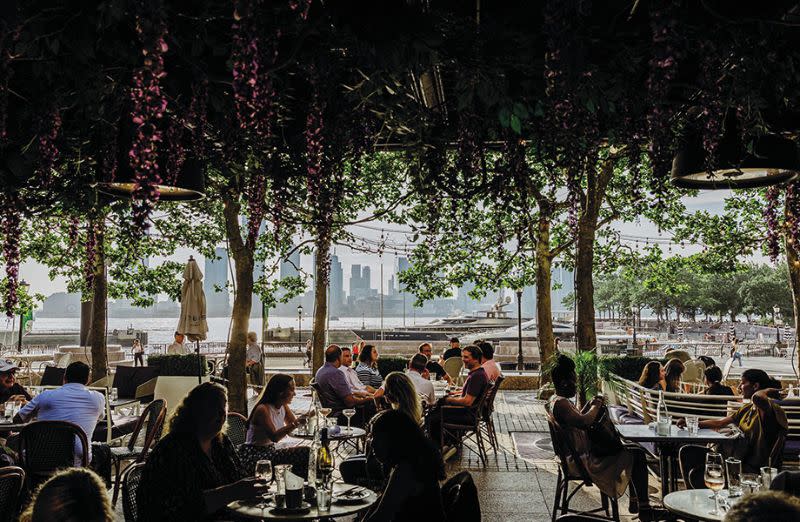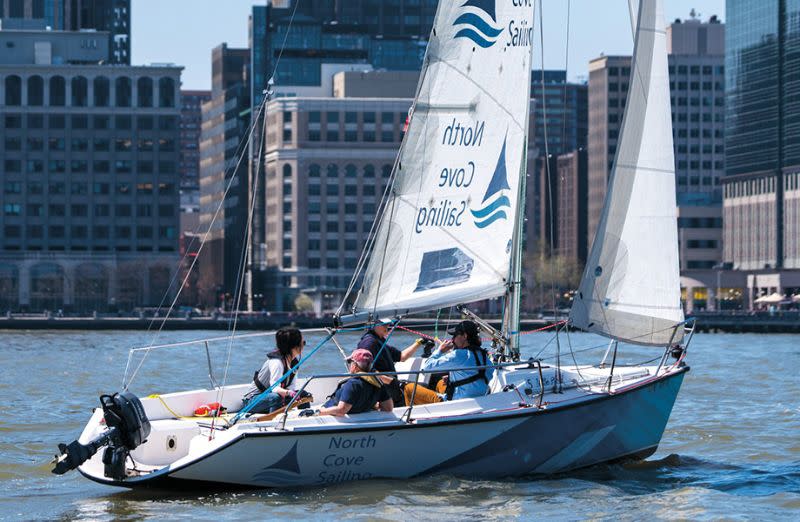
NOMINATIONS CLOSE SEPTEMBER 12 RECOGNISING THE INDIVIDUALS BEHIND THE PROJECTS
NOMINATIONS CLOSING SEPTEMBER 12 URBAN LEADER AWARDS
Resources
Newsletter
Stay up to date and with the latest news, projects, deals and features.
Subscribe
Andrew Hoyne speaks to Callie Haines, executive vice-president for Brookfield Properties on how placemaking has transformed this former financial monolith into one of New York’s favourite hubs.
Andrew Hoyne: Placemaking has been key to Brookfield Place New York’ success. Which strategies and initiatives worked, and which required a pivot?
Callie Haines: Previously, Brookfield Place was known as the World Financial Centre. If you’re trying to lease out a couple of million square feet of office space, and you’re in the World Financial Centre, nobody except financial firms are going to come looking for you.
This was after the financial crisis, too, so financial firms weren’t growing. We needed to turn that on its head, hence the rebranding.
Our original repositioning was completed in 2015. We had about 1.5 million square feet (139,000sq m) for lease, of the total eight million square feet (743,000sq m) of office space. Our thesis was: “If we can create a great ground floor, second floor, and outdoor experience, that will help with the office leasing.”
We knew that food and beverage (F&B) would be the anchor, which was a new concept at the time—previously department stores played that role. We turned that around. We said, “What does a mixed-use community need?” Food and beverage is always number one. So we centred our retail curation around Le District (a French market and food hall) on the ground floor, and Hudson Eats upstairs.
Hudson Eats is an interesting story. We asked 14 local New York and LA-based purveyors to open up outposts here. We signed 10-year leases with all of them and we built the common space and they built their own spaces.

Well, it turns out making 10-year deals in the F&B world is the wrong way to go. It gave us no opportunity to evolve the offering as concepts and tastes changed. We didn’t know what was going to resonate, so we didn’t think through that strategy. That’s one massive lesson learned.
Although we supported all our retailers during the pandemic, we also took it as an opportunity to make changes such as allowing tenants that weren’t performing and wanted out to walk away from their contracts. That allowed us to re-tenant about five of the outposts in Hudson Eats and create better diversity and a better dining hall destination overall.
Another lesson learned is that it’s a mistake to think about our properties solely from a corporate point of view. Only thinking about what large enterprise tenants want does not offer the full perspective.
We are now much more focused on our niche audiences—we’ve got the tenants in our building, the residents in the community, and tourists. This changes how we think about our spaces.
You’ve got to attract people and keep them here. You have to create a vibe. Bars and restaurants do that to a certain extent but you also have to create a fun environment, even if it’s just a simple thing like music. It’s amazing how music can create a vibe.
Arts Brookfield animates our plazas and public spaces at all times of day. We have the largest privately funded public arts program in the country. Our arts and events programming is a key component of the placemaking strategy.

Andrew Hoyne: Brookfield New York has done something we haven’t seen before; you’ve created a sailing school. How did this come about?
Callie Haines: We have a great partnership with the Battery Park City Authority, from whom we lease the wharf/dock. They also manage all the parks located around us as well, so we work closely with them to manage security, maintenance and so on.
We started the sailing club and a sailing school with 12 boats. We asked the community for suggestions for the boat names, then we took all those suggestions and picked the best 12. Some of the suggestions were very entertaining. In summer we offer free sailing to the community every Sunday morning, with the sailing coaches taking people out.
We do sailing camps for kids, ages seven to 15. I headed up that camp for a little while and it was fun. I’ve got kids so I knew what kids’ camps needed to be.
Andrew Hoyne: Sailing is generally considered an activity for the wealthy, so how have you made sure everyone feels welcome?
Callie Haines: Offering free community sails every Sunday morning is one way. We also hold a lot of sailing and other events out on the Plaza, all of which are open to everybody.
For the first few years of the program we also offered students from other parts of the city—who wouldn’t usually have the opportunity to go sailing—work as interns with the sailing instructors helping to teach the younger kids. That was a really great program.
Andrew Hoyne: How did you tackle the challenge of working with a building that is very dated? There are asset owners all over the world navigating similar situations who would be very interested to know more about how Brookfield managed the transformation so well.
Callie Haines: We have good architects. For example, the bank of windows along the facade didn’t exist before. We opened those spaces up and peeled the facade back as much as we possibly could to create that indoor-outdoor feel.
Opening the architecture up to the outside and creating light and space was key. The goal was to make sure that wherever you stood within Brookfield Place, you could find a view. That was not how the complex was originally designed. It was built to be very insular and inward facing—it was a fortress for finance.
We also kept some important elements. The Winter Garden shopping precinct was rebuilt and reopened exactly one year after 9/11. It was the first part of downtown to be rebuilt and it’s become the heart and soul of the community.
Previously, all the offices on the second floor had a bridge connection to the World Trade Centre, which was the only way to reach it directly from our building. When the bridge was lost in 9/11, the central grand staircase no longer served a purpose. We thought about taking down the staircase but the community wanted it to stay.
Andrew Hoyne: In this multibillion-dollar property development, what contribution does placemaking make to that asset value?
Callie Haines: By clearly conveying our vision to the market, placemaking has enabled us to lease two million square feet of office space in under 18 months, when we expected it to take at least three to four years. That drives value because you’re getting rent earlier.
If we hadn’t undertaken all our placemaking initiatives, I’d say this multibillion-dollar asset would be worth 40 per cent less than it is now. In the context of a post-Covid-19 world, if we hadn’t executed our vision, this place would be toast. It would be dead in the water.
This is a summarised extract from The Place Economy Volume 3 eBook by Hoyne. The Place Economy is a series of resource books which look at best practice placemaking around the world. Purchase your copy here: https://hoyne.com.au/the-place-economy/
The Urban Developer is proud to partner with Hoyne to deliver this article to you. In doing so, we can continue to publish our daily news, information, insights and opinion to you, our valued readers.